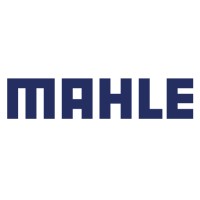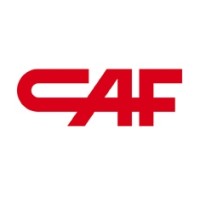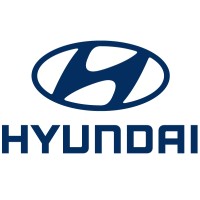Company Cyber Security Posture
NANA
NA Company Details
NA
NA
NA
NA
NA
NA
Scan still pending
NA
NA
Between 200 and 800
This score is AI-generated and less favored by cyber insurers, who prefer the TPRM score.
 NA Global Score
NA Global Score.png)

Company Scoring based on AI Models
| Model Name | Date | Description | Current Score Difference | Score |
|---|---|---|---|---|
| AVERAGE-Industry | 03-12-2025 | This score represents the average cybersecurity rating of companies already scanned within the same industry. It provides a benchmark to compare an individual company's security posture against its industry peers. | N/A | Between 200 and 800 |
Company Cyber Security News & History
| Entity | Type | Severity | Impact | Seen | Url ID | Details | View |
|---|
Company Subsidiaries

NA
Access Data Using Our API

Get company history
.png)
NA Cyber Security News
Lovable LBX? – life with the little Lexus
The only available powertrain consists of a 1.5-litre engine – which is not turbocharged – and two motors. Their combined numbers are 100 kW ( ...
Lexus, A Rare Sales Winner In Europe, Looks For RZ 300e Boost
Toyota's upmarket Lexus subsidiary, a rare sales winner in a weak European market, is launching a new electric SUV, the RZ 300e.
Toyota plans nine EVs for Europe for this year and 2026
The Japanese automaker said it will launch three Toyota brand electric SUVs this year - new versions of the bZ4X, Urban Cruiser and C-HR+ - ...
Lexus line-up goes electrified only as LC and RC F retired
Lexus drops its two coupés, meaning it no longer offers a V8 or a sports car.
Lexus Is Dropping The RC And LC Sports Cars In Europe
Amidst a sea of worthy but ultimately quite dull hybrids, Lexus has long been quietly flying the flag for the big, naturally-aspirated V8 ...
Porsche halts 718 Cayman, Boxster sales in Europe over cybersecurity rules
Porsche has announced it's discontinuing 718 Boxster and Cayman sales in those regions. Both of those were eventually going away to make room for new all- ...
Cybersecurity Law Forces Porsche To Kill Gas-Powered Macan In Europe [Update]
Porsche just revealed the new, second-generation Macan, and it's all electric. It seems like a bold move for Porsche, going EV with its best- ...
CDK Global shuts down car dealership software after cyberattack
A leading software provider to U.S. car dealerships has shut down most of its systems “out of an abundance of caution" after a cyberattack.
Russia calling? Scammers target high-level Western officials
Researchers say Russian comedy duo Vovan and Lexus have ramped up their targeting of Western officials who have spoken out against Moscow.

NA Similar Companies

MAHLE
MAHLE is a leading international development partner and supplier to the automotive industry with customers in both passenger car and commercial vehicle sectors. Founded in 1920, the technology group is working on the climate-neutral mobility of tomorrow, with a focus on the strategic areas of elect

CAF (Construcciones y Auxiliar de Ferrocarriles)
CAF is a global leader in comprehensive transportation systems, shaping the future of sustainable mobility. More and more cities worldwide choose us as their strategic partner to tackle the challenges of mobility and decarbonisation of transport. Continuous innovation is the cornerstone of our comp

BorgWarner
As a global product leader for over 130 years, we deliver innovative and sustainable mobility solutions. Guided by our commitment to inclusion, integrity, excellence, responsibility and collaboration—and our pledge to reach carbon neutrality by 2035—we’re leading the automotive industry to a future

Honda Cars India Ltd
Honda Cars India Ltd. (HCIL), a leading manufacturer of premium cars in India, was established in December 1995 with a commitment to provide Honda’s passenger car models and technologies, to the Indian customers. HCIL’s corporate office is based in Greater Noida, UP and its state-of-the-art manufact

FORVIA HELLA
FORVIA HELLA is a listed international automotive supplier. As a company of the FORVIA Group, FORVIA HELLA stands for high-performance lighting technology and vehicle electronics and, with the Lifecycle Solutions Business Group, also covers a broad service and product portfolio for the spare parts a

Hyundai Motor India Ltd.
Hyundai Motor India Limited (HMIL) is a wholly-owned subsidiary of Hyundai Motor Company (HMC). HMIL is India’s first smart mobility solutions provider and the number one car exporter since its inception in India. It currently has 12 car models across segments GRAND i10 NIOS, All New i20, i20 N Line

Frequently Asked Questions
Explore insights on cybersecurity incidents, risk posture, and Rankiteo's assessments.
NA CyberSecurity History Information
How many cyber incidents has NA faced?
Total Incidents: According to Rankiteo, NA has faced 0 incidents in the past.
What types of cybersecurity incidents have occurred at NA?
Incident Types: The types of cybersecurity incidents that have occurred include .
Additional Questions
What Do We Measure?
















Every week, Rankiteo analyzes billions of signals to give organizations a sharper, faster view of emerging risks. With deeper, more actionable intelligence at their fingertips, security teams can outpace threat actors, respond instantly to Zero-Day attacks, and dramatically shrink their risk exposure window.
These are some of the factors we use to calculate the overall score:
Identify exposed access points, detect misconfigured SSL certificates, and uncover vulnerabilities across the network infrastructure.
Gain visibility into the software components used within an organization to detect vulnerabilities, manage risk, and ensure supply chain security.
Monitor and manage all IT assets and their configurations to ensure accurate, real-time visibility across the company's technology environment.
Leverage real-time insights on active threats, malware campaigns, and emerging vulnerabilities to proactively defend against evolving cyberattacks.




